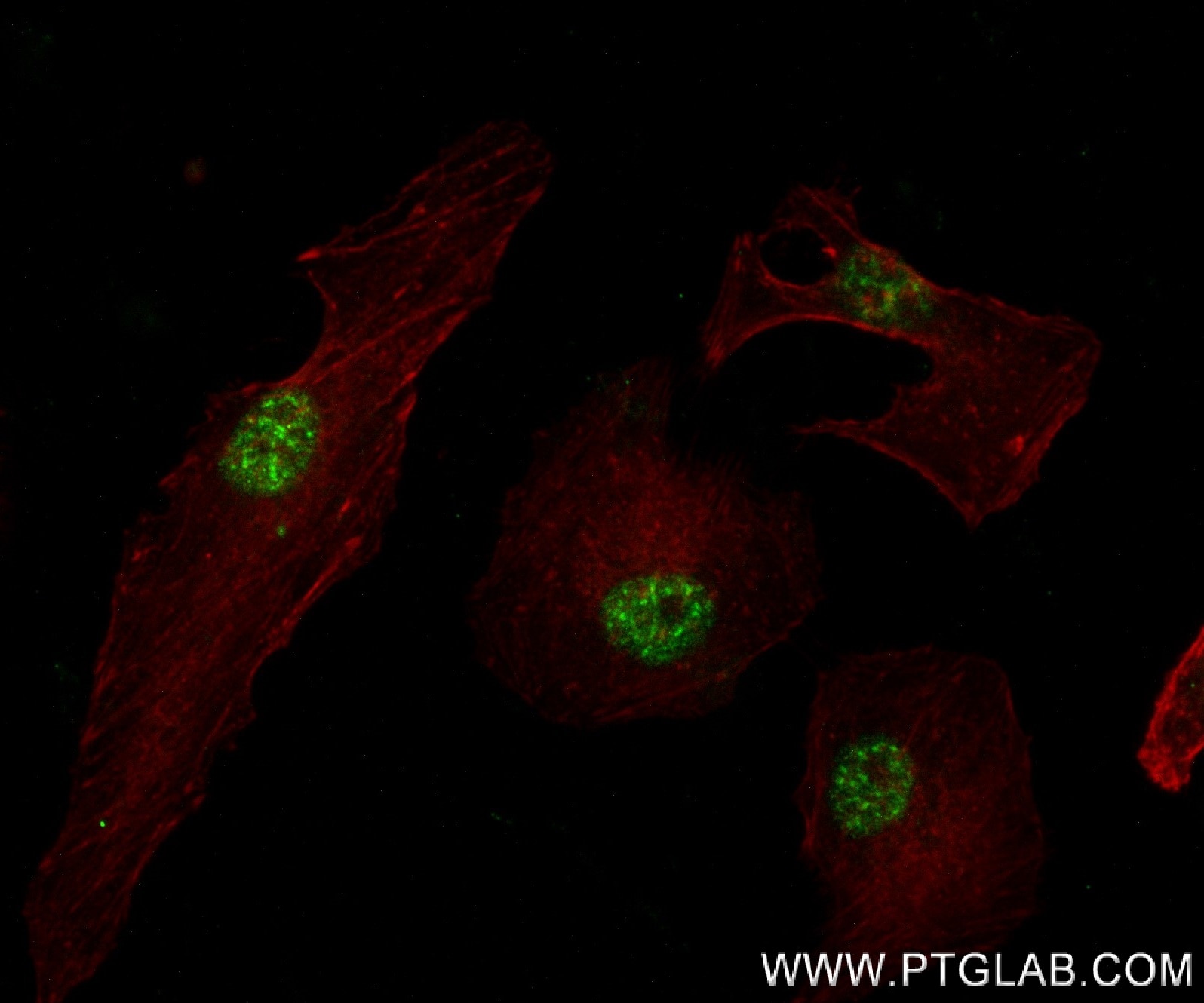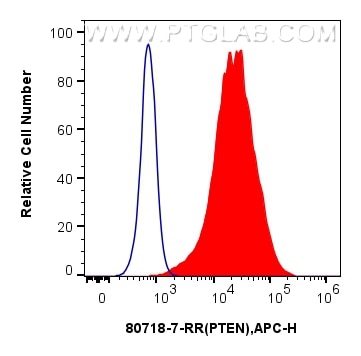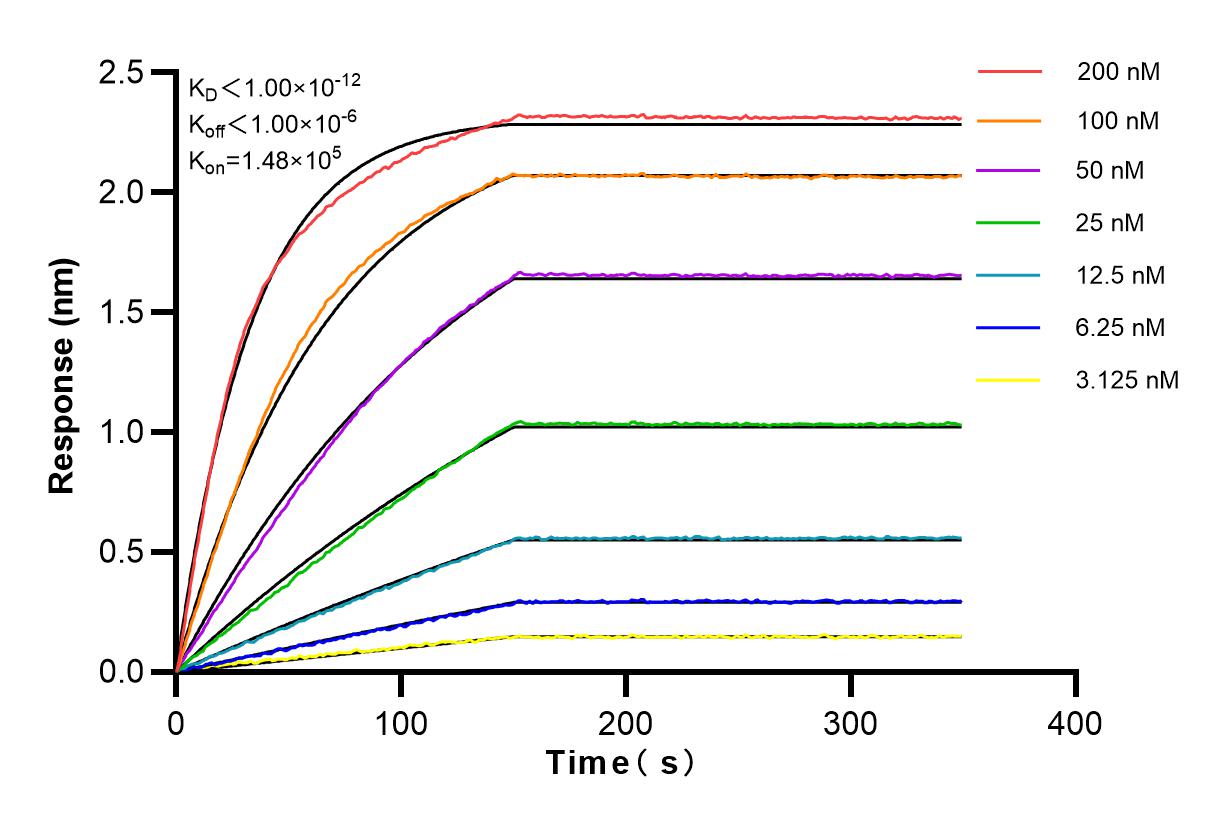Anticorps Recombinant de lapin anti-PTEN
PTEN Recombinant Antibody for IF/ICC, FC (Intra), ELISA
Hôte / Isotype
Lapin / IgG
Réactivité testée
Humain
Applications
IF/ICC, FC (Intra), ELISA
Conjugaison
Non conjugué
CloneNo.
240134F7
N° de cat : 80718-7-RR
Synonymes
Galerie de données de validation
Applications testées
| Résultats positifs en IF/ICC | cellules HeLa, |
| Résultats positifs en FC (Intra) | cellules HeLa |
| Résultats positifs en cytométrie | cellules HeLa |
Dilution recommandée
| Application | Dilution |
|---|---|
| Immunofluorescence (IF)/ICC | IF/ICC : 1:150-1:600 |
| Flow Cytometry (FC) (INTRA) | FC (INTRA) : 0.25 ug per 10^6 cells in a 100 µl suspension |
| Flow Cytometry (FC) | FC : 0.25 ug per 10^6 cells in a 100 µl suspension |
| It is recommended that this reagent should be titrated in each testing system to obtain optimal results. | |
| Sample-dependent, check data in validation data gallery | |
Informations sur le produit
80718-7-RR cible PTEN dans les applications de IF/ICC, FC (Intra), ELISA et montre une réactivité avec des échantillons Humain
| Réactivité | Humain |
| Hôte / Isotype | Lapin / IgG |
| Clonalité | Recombinant |
| Type | Anticorps |
| Immunogène | PTEN Protéine recombinante Ag17274 |
| Nom complet | phosphatase and tensin homolog |
| Masse moléculaire calculée | 47 kDa |
| Numéro d’acquisition GenBank | BC005821 |
| Symbole du gène | PTEN |
| Identification du gène (NCBI) | 5728 |
| Conjugaison | Non conjugué |
| Forme | Liquide |
| Méthode de purification | Protein A purfication |
| Tampon de stockage | PBS with 0.02% sodium azide and 50% glycerol |
| Conditions de stockage | Stocker à -20°C. Stable pendant un an après l'expédition. L'aliquotage n'est pas nécessaire pour le stockage à -20oC Les 20ul contiennent 0,1% de BSA. |
Informations générales
PTEN is one of the most critical tumor suppressors, which functions at different subcellular locations, including the plasma membrane and nucleus. The PTEN protein is located at different subcellular regions-PTEN at the plasma membrane suppresses PI3-kinase signaling in cell growth, whereas PTEN in the nucleus maintains genome integrity. At the plasma membrane, PTEN counteracts PI3 kinase signaling by dephosphorylating the potent second messenger PIP3 to PIP2. The loss of PTEN in cancer cells results in over-activation of AKT and mTOR signaling, leading to excessive stimulation of cell growth and inhibition of cell death. In the nucleus, PTEN functions in DNA repair, genome stability, and cell cycle control through associations with Rad51 and p53. PTEN stability is primarily regulated by phosphorylation of C-terminal tail domains (Thr366, Ser370, Ser380, Thr382, Thr383, and Ser385). The phosphorylation leads to a "closed" state of PTEN and maintains PTEN stability. Dephosphorylation of the C-terminal tail opens the PTEN phosphatase domain, thereby increasing PTEN activity. PTEN protein is of the apparent molecular mass expected for PTEN (55 kDa) and PTENα (70 kDa).(PMID: 33083717, PMID: 20622047, PMID: 24768297)
Protocole
| Product Specific Protocols | |
|---|---|
| IF protocol for PTEN antibody 80718-7-RR | Download protocol |
| FC protocol for PTEN antibody 80718-7-RR | Download protocol |
| Standard Protocols | |
|---|---|
| Click here to view our Standard Protocols |





